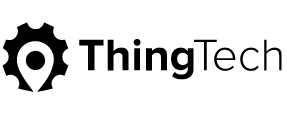Stop Coronavirus Spread – 5 Telematics Best Practices
As the world is impacted by the coronavirus (COVID-19), we want to thank our first responders and medical professionals — those on the front lines helping stem the tide of this virus. Many technologies are also at the forefront of combating this virus. Whether medical in nature, or not, these technologies are focused on either finding a cure, more effectively treating patients, or limiting the spread of the disease.
Accordingly, we wanted to share with government agencies and the fleet management, IoT, and telematics industries some best practices we are seeing in the use of “connected” technologies — many of which are manifesting as unexpected use cases within the first responder community.
Many telematics platform vendors can address these best practices. Therefore, regardless of which partner you are using, engage with them and think out of the box on these and other areas which may assist your community efforts in fighting this virus.
1) Leverage geofences to identify high priority areas or locations. For example, nursing homes or senior living facilities can be identified, and with telematics, you can ensure that wellness checks by medical professionals are occurring as their vehicles enter/exit the geofence.
2) Utilize “closest responder or asset” type queries with filters. For example, if a medical emergency occurs, ensure that your dispatchers can send the closest responder/asset with the requisite training and protective gear to address the situation.
3) Establish more stringent cleaning and disinfecting schedules for fleet and transit transportation assets. Again, use geofences to ensure these assets are “checking in/out” of these cleaning zones and use workflow to automate the schedules.
4) Tag and track mission-critical assets (e.g. test kits, ventilators, mobile test labs) through the supply chain, which can be done with low-cost barcoding or telematics. Unfortunately, we are aware of the theft of some critical assets such as ventilators – consider small, battery-powered GPS trackers for theft recovery.
5) Lastly, cross-pollinate these technologies across departments in order to drive a holistic view of the resources at your disposal and prevent silos, particularly in regard to first responders and mission-critical assets.

